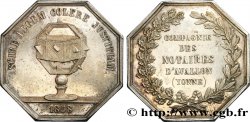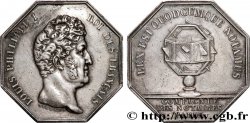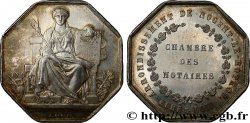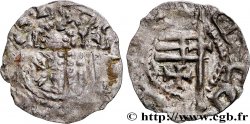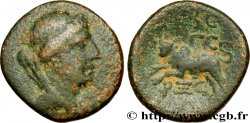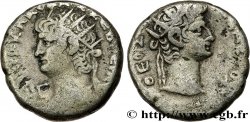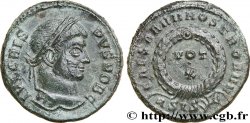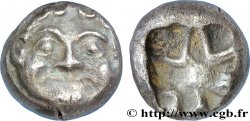Live auction - fjt_382375 - 19TH CENTURY NOTARIES (SOLICITORS AND ATTORNEYS) Notaires de Laon (Louis XVIII) 1816
You must signin and be an approved bidder to bid, LOGIN TO BID. Accounts are subject to approval and the approval process takes place within 48 hours. Do not wait until the day a sale closes to register. Clicking on "BID" constitutes acceptance of the terms of use of cgb.fr private live auctions.
Bids must be placed in whole Euro amounts only. The sale will start closing at the time stated on the item description; any bids received at the site after the closing time will not be executed. Transmission times may vary and bids could be rejected if you wait until the last second. For further information check the Live auction FAQ
All winning bids are subject to a 18% buyer’s fee.
All winning bids are subject to a 18% buyer’s fee.
| Estimate : | 580 € |
| Price : | no bid |
| Maximum bid : | no bid |
| End of the sale : | 01 March 2016 18:23:28 |
Type : Notaires de Laon (Louis XVIII)
Date: 1816
Metal : silver
Diameter : 31 mm
Weight : 11,07 g.
Rarity : R3
Coments on the condition:
Des marques de manipulation dans les champs
Catalogue references :
Obverse
Obverse legend : LOUIS XVIII. ROI DE FRANCE.
Obverse description : Buste de Louis XVIII à droite, cheveux noués.
Reverse
Reverse legend : REGUNT QUODCUMQUE NOTAMUS ; À L'EXERGUE : NOTAIRES DE L'ARROND DE LAON AISNE. MDCCCXVI.
Reverse description : Table de la loi sous un oeil rayonnant appuyée sur une colonne et une table qui porte une balance et une lampe.
Reverse translation : Elles rendent obligatoires ce que nous rédigeons.
Commentary
Jeton référencé dans le complément du "LEROUGE", paru dans la revue "LE GNOMON", bulletin n° 47, janvier 1986. Un point après L’ARROND, le plateau de la balance ne touche pas la table et le point est plus rapproché de NOTAMUS.
La devise "Lex est quodcumque notamus" est une création du père Ménestrier en 1686 pour les secrétaires du roi qui ne s'en sont jamais servi. L'invention fut reprise par les notaires de Paris puis ensuite par les notaires de Province.
La devise "Lex est quodcumque notamus" est une création du père Ménestrier en 1686 pour les secrétaires du roi qui ne s'en sont jamais servi. L'invention fut reprise par les notaires de Paris puis ensuite par les notaires de Province.







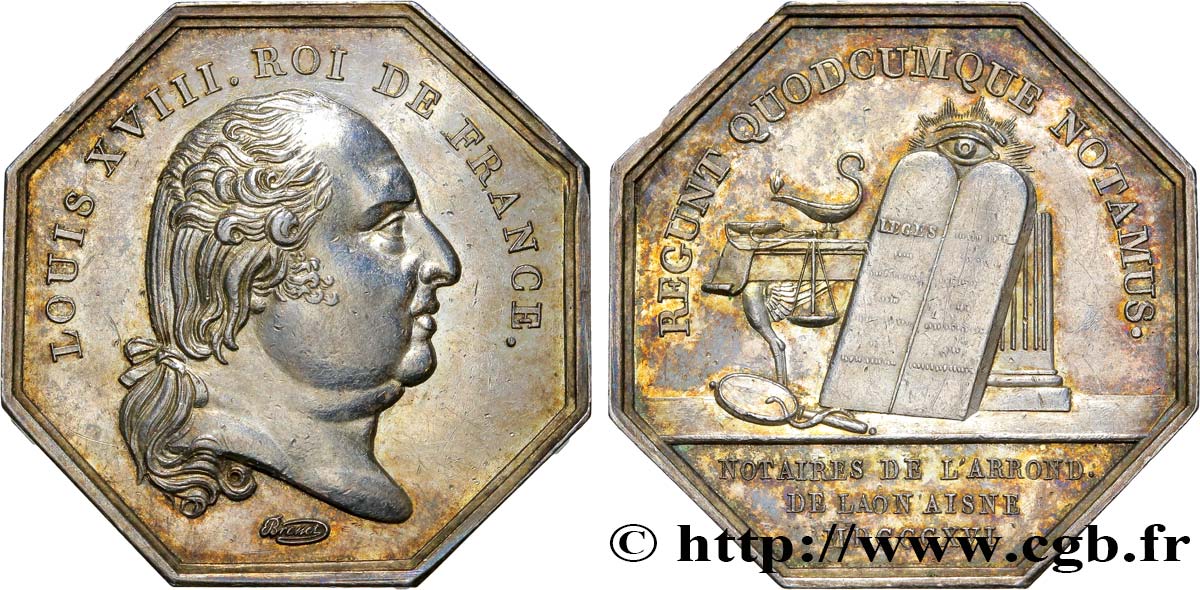
 Report a mistake
Report a mistake Print the page
Print the page Share my selection
Share my selection Ask a question
Ask a question Consign / sell
Consign / sell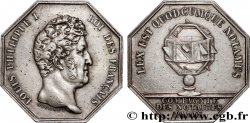
 Full data
Full data